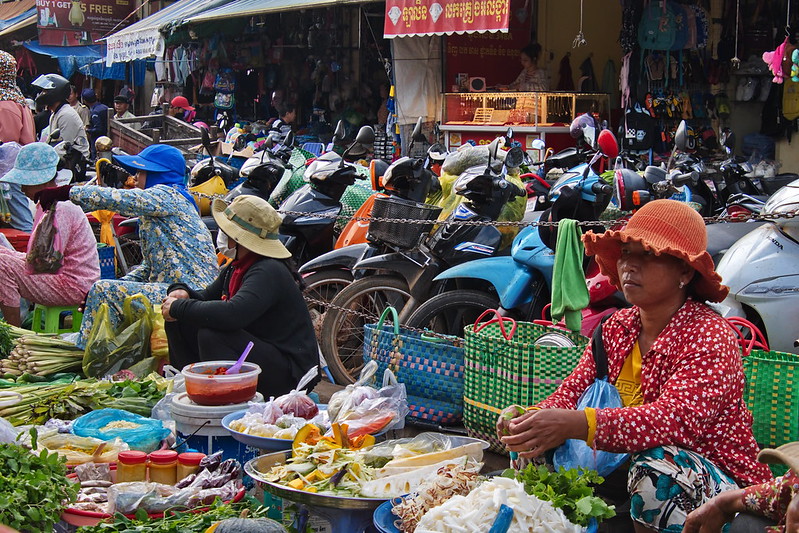The Unprecedented Impact of Laos’ Economic Crisis


In Summer 2022, Laos’ economic crisis hit a breaking point. The national debt rose to more than 10% of the GDP of the country. Two-thirds of workers had their pay either decrease or remain the same. Food insecurity increased to dangerous levels, with 35% of households reporting regularly not eating a meal for an entire day. However, despite these worrying statistics, the economy has shown signs of rejuvenation in the past year; major international organizations have worked to aid the Asian nation. To grasp the scope of this issue affecting millions, a breakdown of the key issues, people and possibilities is necessary.
What Caused the Crisis?
Similar to much of the world’s economic shortcomings over the past three years, the main cause of this crisis is the COVID-19 pandemic. However, that is not the only cause of the issue. Laos relies heavily on trade with China which has also seen a slowdown in the growth of their economy. Also, the war in Ukraine has proved to be an additional factor that has severely affected worldwide trade and commerce.
Public and publicly guaranteed debt (PPG) is the main issue that Laos faces. Laos owes most of this debt to its main trading partner – China. As China has not had the GDP growth it would have wanted, the pressure to recoup some of the money owed from Laos increased. Public debt dwarfed government revenues in 2022, with 966% more debt than revenue. The Lao currency, the kip, has currently lost 90% of its value in comparison with the U.S. dollar.
As is the case with many developing countries, the economy is incredibly fragile and subject to the international climate. Increased global prices for items such as fuel have caused inflation to peak at around 23%, the highest rate in Laos since 2000 and almost three times larger than the global average.
In August 2022, Fitch, a New York-based capital company, rated Laos’ Foreign Currency Issuer Default Rating (IDR) at a ‘CCC-’, meaning ‘substantial credit risk.’ Fitch has described this rating as a “very low margin for safety, default is a real possibility.” Laos’ economic crisis has caused the nation to receive a rank in the bottom 15 across the globe for financial security.
Who Does Laos’ Economic Crisis Affect?
The poorest in Laos are on the front lines of this crisis. A report by World Vision International (WVI) highlighted the precarious position of food security. Out of 217 households surveyed across 38 communities, 62% stated they experienced severe food insecurity, ranging from skipping meals to going over a day without eating.
Even more worrying, it was reported that 46% of households used personal savings to be able to afford food, 26% took out loans, and 14% had to take on additional daily labor. One in three households began to sell assets to be able to eat, such as livestock, transportation and mobile devices.
Fortunately, the citizens of Laos often rely on their own agriculture for their food production so the crisis has not impacted as many families as severely as first feared. However, some households in rural areas that were not adequately equipped to maintain agricultural production had to resort to growing their own food, resulting in a poorer diet and increased risks of health conditions.
Laos’ economic crisis caused a major decrease in public spending on crucial services and infrastructure. Low-income households had to reduce health care spending, and 7% of children dropped out of school due to not being able to afford to keep their children enrolled.
Laos’ citizens had to take drastic measures in an attempt to secure work. Farmers who could no longer afford fuel for their machinery abandoned their professions and homes and immigrated to other countries to seek out jobs, an incredible risk to their safety and stability.
What is the Hope for Laos?
Despite the hardships millions are currently facing there is hope for the future. The World Bank published ‘The Vital Five’, a five-step plan to secure macroeconomic stability. These goals are:
- Cut costly tax exemptions to raise public revenue
- Improve the governance of public and public-private investment
- Restructure public debt through negotiations
- Strengthen financial sector stability through legal and regulatory tools
- Enhance the business environment through regulatory reforms
Laos was also one of the quickest developing economies in Southeast Asia before a slowdown caused firstly by natural disasters towards the end of the 2010s, and then the COVID-19 pandemic. The rate at which Laos’ economy was growing before 2018 is a good sign for future progression; the foundation was already laid out and saw great success.
Investments in newly constructed sectors such as hydropower are also great opportunities to boost trade and commerce in the nation. About 21% of the economy was directly contributed by hydropower and mining in 2021, despite only accounting for 1% of all jobs. Further expansion into these avenues will create sustained opportunities for job security for thousands of the Lao people.
The UNDP, the United Nations International Development Agency, stated that “The future of the country must be built of its current and future assets: its natural capital, its young population and its revitalized links to its neighbors and to the world. Now is the time to increase spending on health and education to establish a workforce that is ready for the future, and to pave a pathway for all Lao to prosper.”
Looking Ahead
Laos’ economic crisis is a matter that will continue to affect the most vulnerable for years to come. However, with the work of international organizations such as the World Bank and the UN, Laos has the structure in place to attain the goals set and ensure security and prosperity for its people. The government of Laos must adapt quickly and invest in its citizens to steer away from this crisis and towards a more equal, developed nation.
– Oliver Rayner
Photo: Flickr
